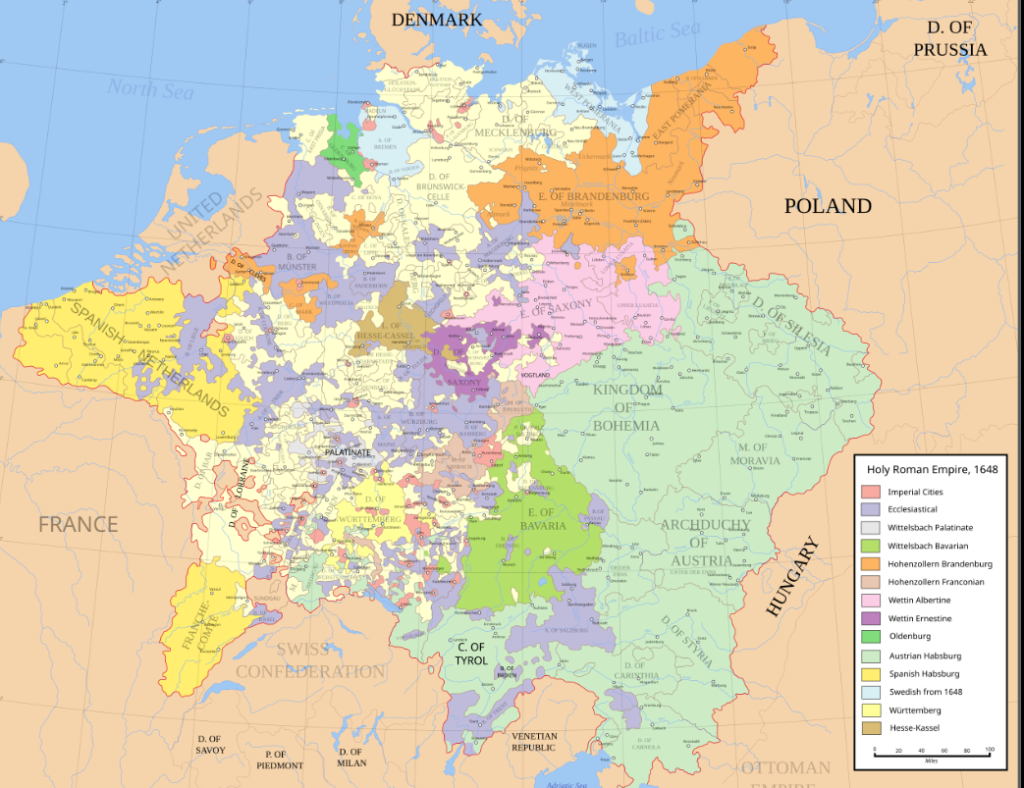
The Peace of Westphalia, signed in 1648, marked the end of the Thirty Years’ War in the Holy Roman Empire, as well as the Eighty Years’ War between Spain and the Dutch Republic. The peace settlement had significant implications for the political landscape of Europe, especially within the Holy Roman Empire.
Before the Peace of Westphalia, the Holy Roman Empire was a patchwork of numerous semi-independent states, with the emperor holding limited authority over them. After the peace, several important changes took place:
- Decentralization of the Empire: The Peace of Westphalia effectively ended the emperor’s control over the internal affairs of the various states within the empire. It granted more sovereignty to individual rulers within the Holy Roman Empire, further fragmenting the power structure. This increased the independence of territories, cities, and principalities, which were largely free to manage their own affairs without interference from the emperor.
- Territorial Adjustments: Some territorial changes occurred as a result of the peace:
- France gained territory in the Holy Roman Empire, particularly in regions like Alsace, which was split between France and the Holy Roman Empire.
- Sweden acquired influence in northern Germany, gaining control over parts of western Pomerania and other territories along the Baltic Sea.
- The Dutch Republic was officially recognized as independent from Spain, solidifying their position as a major European power.
- Switzerland was recognized as fully independent from the Holy Roman Empire, which set the stage for its later neutral status in European conflicts.
- Religious Changes: The peace settlement reaffirmed the provisions of the earlier Peace of Augsburg (1555), which had allowed the rulers of the Holy Roman Empire to determine the official religion of their territories. After Westphalia, however, it also granted legal recognition to Calvinism, alongside Lutheranism and Catholicism, as a valid religion within the empire.
- Reduced Influence of the Emperor: The emperor’s authority was further diminished, as the princes and other states within the empire gained more autonomy. The emperor’s role became largely ceremonial, with little power to enforce his will across the empire.
The map of the Holy Roman Empire after the Peace of Westphalia reflects these changes. It shows a highly fragmented political landscape, with powerful states like Austria (the Habsburg Monarchy), Brandenburg-Prussia, Bavaria, Saxony, and the Electorates maintaining their own sovereignty, while the emperor’s realm was largely confined to Austria and a few other regions.
If you’re interested, I could show you a map of the Holy Roman Empire during this period. Would that be helpful to you?